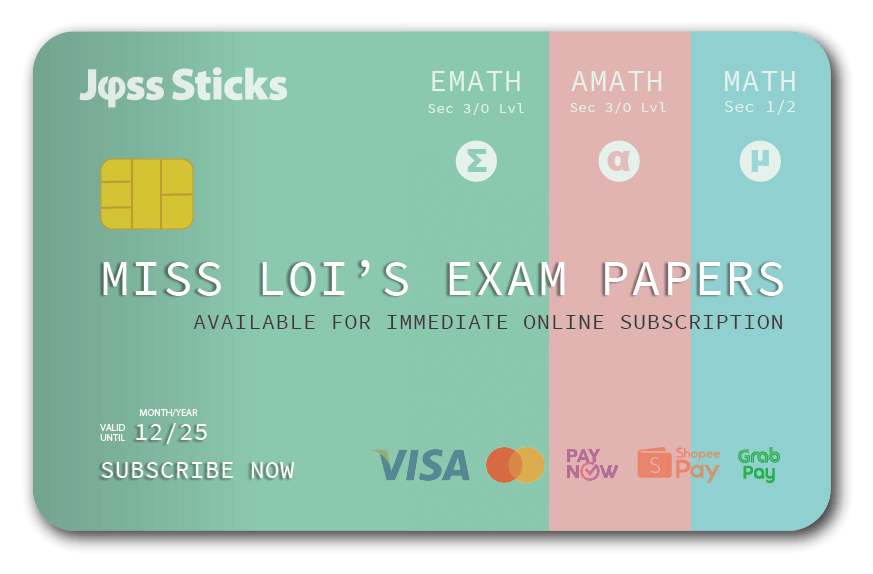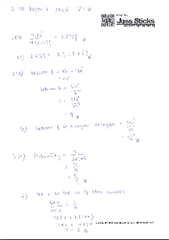Act I, Scene 4
Miss Loi’s Temple, The Chamber of φ
TWAAANG! …
*hurried footsteps*
[Enter CHIEF DISCIPLE]
The Chief Disciple of The Temple appeared and rushed forward to lay prostrate before the High Priestess.
Oh forgive me! My High Priestess 教主!
I did not anticipate the unprecedented traffic that descended upon our website last Wednesday night!
弟子该死! 弟子该死! *slaps own face*
She paused her guzheng playing, and glanced momentarily at the Chief Disciple.
*sigh*
The two EMaths papers last week were apparently so easy to the point that the A1 cut-off mark is now firmly believed to be well into the 90s.
That had led to a massive “how many marks have I lost/can be saved” marks-counting exercise, resulting in comments that took me three nights to go through (and still continuing 🙁 )
Such is the mess of our academic 江湖 these days.
Suddenly the heavens opened, and a thunderstorm pelted the Temple’s ornate roof.
My High Priestess 教主! I have incoming news from the AMaths front!
Something about EMaths sine rule & a distance traveled by a particle …
Yes I know …
Once again, she began to play her guzheng faster and faster …
twaaang! twaaang! twaaang! TWAANG! TWAANG! TWAANG!
… until the following shot out from within the strings of the musical instrument.
Click the ![]() button and grab it here!
button and grab it here!
N.B. As usual, please, please leave a comment should you spot any mistake in the solution.
Next, she threw out another swarm of daggers …
Now for Paper 2: Here’s a list of possible topics that may appear for tomorrow’s AMaths Paper 2.
- Polynomials & Remainder Theorem
- Logarithmic & Exponential Functions
- Further Trigonometry esp R-Formula
- Curves
- Maxima/Minima Problems
- Quadratic Equations & Inequalities (Discriminants etc.)
- Plane Geometry aka the 阴阳眼 eyesight test
- Coordinate Geometry
- Integration: Area of region under curve
- Integration/Differentiation of Partial Fractions
- Modulus Functions
- Increasing & Decreasing Functions
Last important tip for today, tomorrow’s an
8AM Morning Paper!!!
[EXEUNT]








 Miss Loi is a full-time private tutor in Singapore specializing in O-Level Maths tuition. Her life’s calling is to eradicate the terrifying LMBFH Syndrome off the face of this planet. For over years she has been a savior to countless students …
Miss Loi is a full-time private tutor in Singapore specializing in O-Level Maths tuition. Her life’s calling is to eradicate the terrifying LMBFH Syndrome off the face of this planet. For over years she has been a savior to countless students … 





















23 Comments
曜
日
Hi! For qn 5 on graph, i did not start from origin(0,0), i started from (0,1). Is it ok?
i read the y intercept wrongly (i think i read it as 2.5 when it should be 2.05) , so i calculate my part ii ans as
ln(M) = 2.5
M = 14.++
Will i get 1m for this method?
iii) Following up, i got wrong too as i used after half M used,
M= 0.5(14.++)
M= 7.++
ln(7.++) = VALUE
i followed this value from my yintercept graph, so i got time as 0.3++, will i also get 1m for my method!
Was this yr's paper harder than 2011's? Thx!
曜
日
@Mark: Also, is it necessary to draw the table to show value of all ln(x) and t? I did it on qn paper. I just plot points directly on graph without showing respective values. :((
曜
日
@Mark: Hard to say. Usually mark(s) should be allocated to the table which shows that you've calculated all the values of ln x correctly.
But since Q5(i) only carries 2 marks, you just might get away with this if you've plotted all your points correctly and drawn a straight line graph.
曜
日
@Mark: Regarding the origin thingy in Q5, it's fine to start at (0,1) provided you've drawn the zigzag line between 0 and 1 on the ln x axis.
For Q5(ii) & (iii) you're basically asking if there's any ecf right? Miss Loi can only say that this will depend on the mark scheme.
Whether 2011 is harder or not is subjective. But Miss Loi does get the feeling last year's paper (especially with that tangent graph) was slightly harder 😀
曜
日
May I ask:
For question 13, part ii, can I show alternatively that as long as the gradient of CP is equal to the gradient of OC, then it means that the line CP passes through the origin?
I would appreciate if you could reply soon. Thanks a lot.
曜
日
@Hallowed hood: Basically you used the proof of collinear points on Q13(ii)! Shouldn't be a problem since it's mathematically sound ^^
曜
日
Hi,
I misread question 11 as roots of x² − 16x + 52 = 0 are α and β, find a quadratic equation whose roots are α + 3β and 3α + β. I did the question as per normal.
Will I be able to get method marks for this question?
曜
日
@Ced: Oh dear *gasp*
The only consolation you could hope for is that 7 marks for Q11 may allow a bit of leeway for a lenient examiner/mark scheme to play around with 🙁
曜
日
For question 9(i) can I differentiate using quotient rule? The answer I got is (-24t-24) over (t+1) to the power of 4. Is this correct?
Also, for question 3(ii) I forgot to write the constants. Will I get method mark out of the three marks?
Thank you
曜
日
@Rebecca: You can't use the quotient rule for 9(i). It can only be used if the numerator and denominator both have a variable (in this case the variable is x). Anyway don't dwell on these stuff since it's worth so little marks. You'll probably be fine if everything else is correct.
曜
日
@Anon!: Thanks! *skippity skippity skips to next comment*
曜
日
hi, for qn 1, dx/dt should be both 0.08 and -0.08.
They question said changing, not increasing nor decreasing. am i wrong?
曜
日
@weineng: Q1: Ok to sort this ang moh issue out ...
Since neither "increasing" or "decreasing" is used to describe the rate in the question, a minus sign would have been placed in front of 0.4 units per sec if it was decreasing.
However, if the rate had been described as "decreasing" in the question, then no minus sign would be necessary.
Thus the rate in described in Q1 is an increasing rate.
曜
日
For 3ii) if I had combined all the individual factors as shown in your workings to form (2x²lnx - x² + 2 c) / 4 will it be wrong?
And for 13iii) if I leave it as per normal in the unexpanded form, will I still be marked right or be deemed wrong?
Thanks
曜
日
@Joel: Q3(ii): Should be fine ^^
Q13(iii): Since it's not specified, standard (unexpanded) or general (expanded) form of the equation of the circle will be fine either way ^^
曜
日
Hi! I got the equation of the circle for the last part of last question in the form of (x-a)^2+(y-b)^2... but I ended up expanding wrongly. So how many marks will be deducted?
Also, for the distance travelled for kinematics, I put 3 units instead of 3m cos I did not see the unit given. How many marks will be deducted?
曜
日
@Raymond: Aiyo ... if only you had left your final answer in (x − a)² + (y − b)² = r² form, you wouldn't have risked 1 mark being deducted for your expansion!
Q9(ii): At the very most, a 1 mark deduction from the pool of miscellaneous marks allocated for very minor infringements such as this one.
曜
日
For qn 11 if I never put =0 will marks be deducted and for the period can I leave it in degree form 720 degrees
曜
日
@Ng Guan Zhi: Q11: Quite a number have committed this error since an equation is required. Not sure how many marks you will be penalised for this though (suspect just 1 mark) 🙁
Q8(ii): Generally you shouldn't answer in degrees when the function is defined in radian space 🙁
曜
日
Hello Ms Loi,
I would like to inquire about the questions 3ii and 5iii.
For question 3ii, If I inadvertently forget to write the Constant term, will marks be deducted? If so, how many out of the 3 marks?
For question 5iii, I only wrote down , and forgot that I had to add in
, and forgot that I had to add in  , giving
, giving  . In this scenario, will I get at least 1 mark, or zero due to the incomplete workings/formulae?
. In this scenario, will I get at least 1 mark, or zero due to the incomplete workings/formulae?
I hope to hear from you soon! 😀
曜
日
@Donburi: Q3(iii): At most one mark.
Q5(iii): Just to clarify, are you attempting to calculate t directly from the equation instead of estimating it from the graph?
曜
日
@Miss Loi: Uhm... Yeap. for Question 5ii. Sorry for the late reply. ><
曜
日
@Donburi: If this is the case, coupled with the fact that Q5(iii) only has 2 marks on offer, it's unlikely you'll get the 1 mark since the equation you've utilised is not correct (as you've mentioned) in the first place 🙁
Moreover you'll still need to estimate k from the gradient of the graph (something which you didn't mention) if you are going down this route.